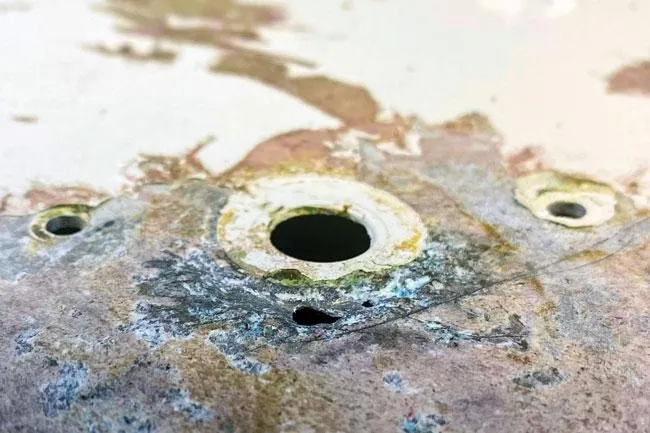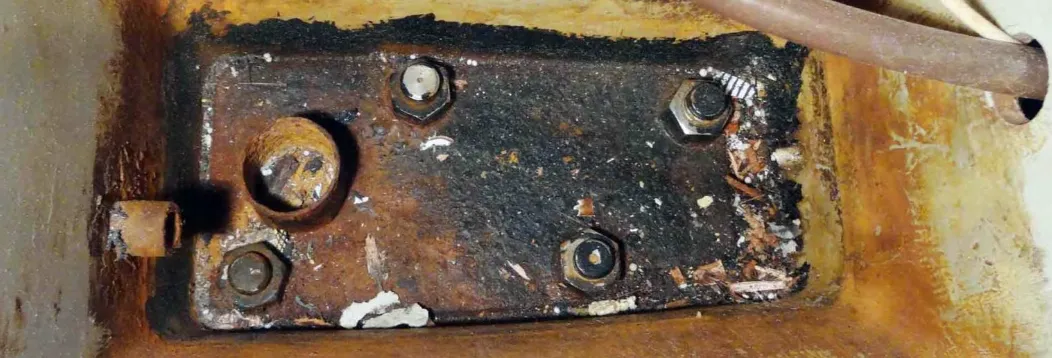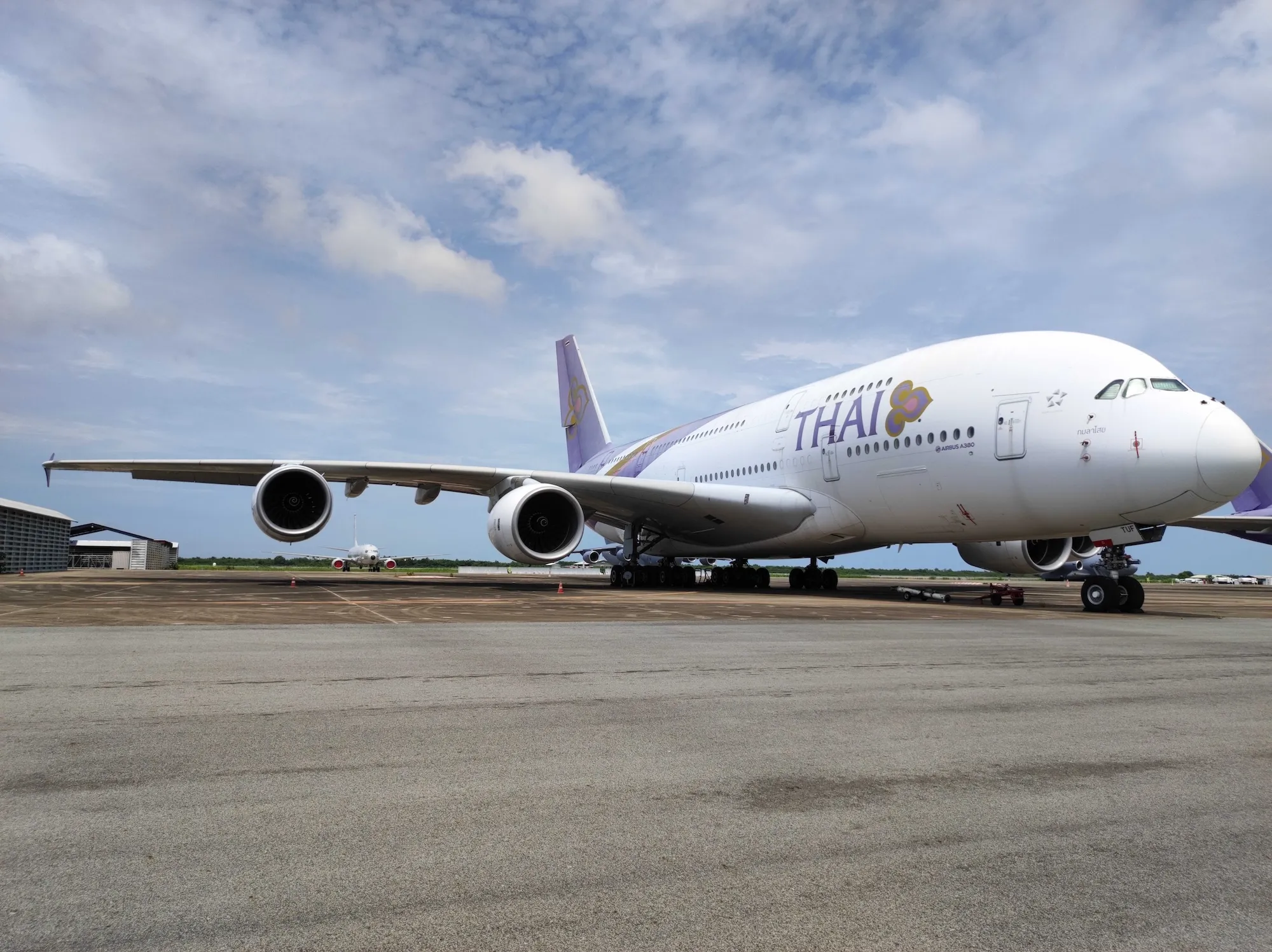DALLAS — Corrosion is amongst the most enduring and expensive problems facing aviation, insidiously eroding airframe integrity and flight safety.
Despite the industry's shift towards materials that are extremely strong and light, have almost perfect surface finishes, and employ advanced maintenance practices, corrosion remains a natural and destructive process that cannot be entirely avoided. Humidity is the sole contributing factor to increasing corrosion. Aircraft that operate near coastal areas are prone to corrosion.

Nature of Corrosion in Aircraft
Corrosion is a natural electrochemical process between the environment and a metal. When metals are exposed to oxygen, moisture, salinity, or chemicals, their surface starts oxidizing, slowly reverting to their parent mineral form. In aviation applications, this process is faster with high-temperature variations at high altitudes, pressure variations, de-icing chemicals, jet engine residue, and atmospheric pollutants. Aircraft are at a higher risk due to their exposure to a wide range of climates, from freezing cruise conditions to being parked under the sun for days.
Corrosion not only promotes degradation but also impacts the mechanical and chemical characteristics of the materials. This results in diminishing tensile strength and ductility. Gradually, the corrosion process can free loose fasteners, increase roughness in aerodynamic shapes, and permit moisture intrusion to electrical circuits, all serious airworthy threats.

Common Types of Aircraft Corrosion
Of the many types of corrosion that plague airplane parts, surface or uniform corrosion is the most common. Surface or uniform corrosion occurs as a dulling or roughening of metallic surface finishes as the protective finishes are stripped away due to corrosion. Uniform corrosion propagates evenly throughout the surface, usually eluding detection until extensive material is lost. Aluminum finishes can develop a whitish chalk-like appearance, with red or brown discoloration common in steel.

Pitting corrosion is also a concern, and is most notable with magnesium and aluminum alloys. This is in the form of tiny cavities or "pits" on the metal surface, typically under seal or paint. Although small, the pits are stress concentrators that can become a focus for cracks, most notably with wing skins and at propeller blades.
Intergranular corrosion refers to the corrosion that occurs on metal grain boundaries, often in ill- or incorrectly heat-treated aluminum alloys during manufacturing. Intergranular corrosion eats away at the interior of a piece of metal, creating corrosion that flakes or falls off in layers. This situation is typically remediated by replacing the component.
Arguably, the most insidious form is stress corrosion cracking that occurs in high-stress components like landing gears, engine mountings, or crankshafts. This is caused by the simultaneous interaction between tensile stress and a corrosive environment, leading to the formation and growth of microcracks under loading/unloading cycles. Being difficult to detect afterward, they will lead to catastrophic component failure.
Environmental and Operating Conditions
The environment in which an aircraft flies is a key contributor to corrosion buildup. Salty, oxygen-rich air is a naturally corrosive environment, and mixing that with airborne ocean spray salts raises the rate of oxidation exponentially. Aircraft that operate in coastal or island-based areas are consequently more susceptible to corrosion. Desert areas are also problematic—sand particles are regularly embedded with retained salts that dissolve surface coatings.
Industrial air pollution, volcanic ash, and exhaust gases are other factors that contribute to the problem. They leave acid deposits on airplane surfaces, which draw moisture and promote corrosion. Even the de-icing fluids, cleaning chemicals, and hydraulic fluids that are applied during maintenance work can encourage corrosion unless they are washed off properly.
The Growing Challenge of Aging Aircraft
Aged fleets experience unique corrosion problems. Despite modern developments in anticorrosion finishes and corrosion-resistant alloys, older aircraft, those 20 years or older in service, for example, lack such protection. Subjected to environmental stress, maintenance-motivated wear, and repetition of pressurization cycles, older structures are inevitably degraded further.
Commercial airlines have nearly a quarter of active planes with lifespans exceeding 20 years. In the military realm, the U.S. Air Force plane's average lifespan exceeds 24 years, delineating the scope of the challenge. Corrosion fatigue in aging planes not only escalates maintenance costs but also affects plane reliability. Previous accidents, such as the 1988 Aloha Airlines Boeing 737 fuselage rupture and the 1992 El Al 747 Amsterdam crash, are grim realities that reflect the potential corrosion that can occur if not addressed.
Identifying Corrosion
A careful eye and regular inspection are required for corrosion. Early signs of corrosion are typically in the form of discoloration, powdery patches, or rough spots on exposed surfaces. White or grey oxidation can be present on aluminum, and rust can be seen on steel.
The maintenance engineers conduct visual inspections, aided by magnifying tools, and employ non-destructive testing techniques, such as ultrasonic and eddy-current testing, to identify sub-surface corrosion. During heavy maintenance checkups, critical areas such as lap joints, wheel wells, and tail sections are targeted for inspection due to their exposure to high stress levels and moisture buildup.
Engineering, Preventive Controls
Effective prevention of corrosion is a combination of material protection, design approach, and predictive maintenance.
The first line of protection is in the form of protective coatings. The aluminum airframes are commonly anodized, which gives a thin layer that resists oxidation. High-grade chromate primer and top coatings form further barriers. Corrosion inhibitors and sealants are used for interior structures to preclude the entry of moisture.
Material choice also proves crucial. Modern aircraft designs increasingly incorporate composites, titanium, and corrosion-proof alloys. They are less reactive and compatible with high-moisture applications.
Controls also decrease corrosion risk. Dehumidifiers, hangars, and clear water rinse systems eliminate contaminants and salt from planes following flights, primarily for coastal-based planes. Boeing and Airbus encourage routine rinse programs during scheduled maintenance aimed at component life extension.
Prevention
Preventive inspection and early repair are still the best means by which corrosion can be controlled. Minor surface corrosion can usually be removed by mild sanding or brushing off with non-metallic brushes and then cleaned with approved alkaline cleansers. After washing, the surface is at once treated with corrosion inhibitors and resealed with protective painting or other finishes to discourage recurrence.

For more serious occurrences with pitting or intergranular corrosion, damaged material is usually mechanically removed, and if necessary, rebuilt with doublers or replaced panels. Structural repairs are always needed to satisfy manufacturer manuals and regulatory standards for continuous airworthiness.
The Cost of Corrosion
Corrosion not only harms safety but also imposes a severe economic burden on airlines. Industry studies conclude that corrosion maintenance comprises nearly 25% of total airplane maintenance costs. Cleaning, inspection, component replacement, and downtimes are the primary causes of this expense. Preventive programs and predictive maintenance analysis have become critical tools for fleet managers to mitigate this expense while ensuring reliability.
A Safer and More Sustainable Future
There is ongoing innovation in modern flight in combating corrosion. Science is also focusing on intelligent coatings that can self-heal in the event of breaches, as well as sophisticated monitoring techniques that can detect corrosion before it becomes apparent. Airlines are also incorporating environmental control into maintenance processes, employing environmentally friendly inhibitors and water-based cleaning technologies.
Ultimately, understanding corrosion is about more than maintaining appearance; it is a matter of structural integrity and flight safety. Surface corrosion, though seemingly minor, can evolve into severe structural degradation if ignored. Through vigilant inspection, engineering innovation, and disciplined maintenance, the aviation industry continues its battle against this silent but formidable enemy, ensuring that aircraft remain not only efficient and economical but also safe for decades of operation.



.webp)
